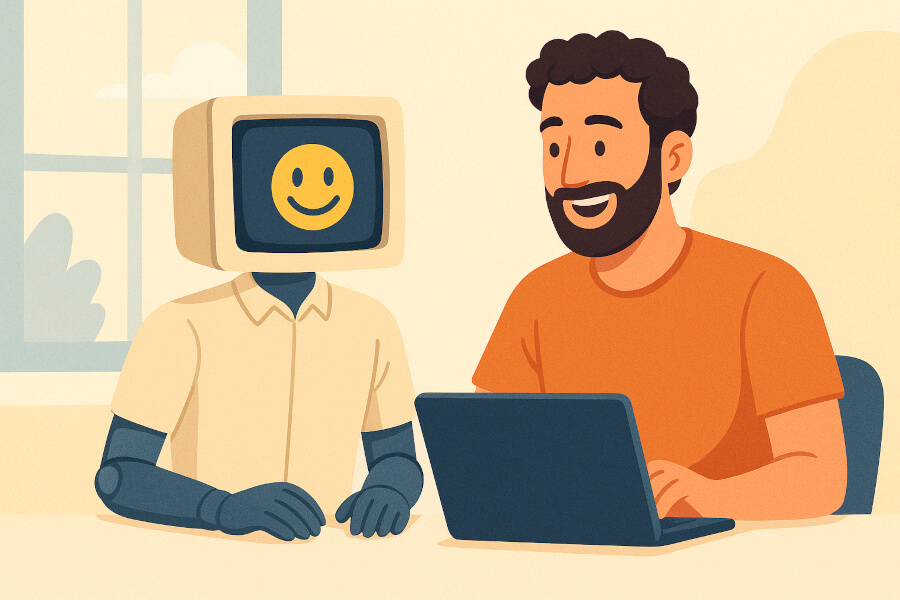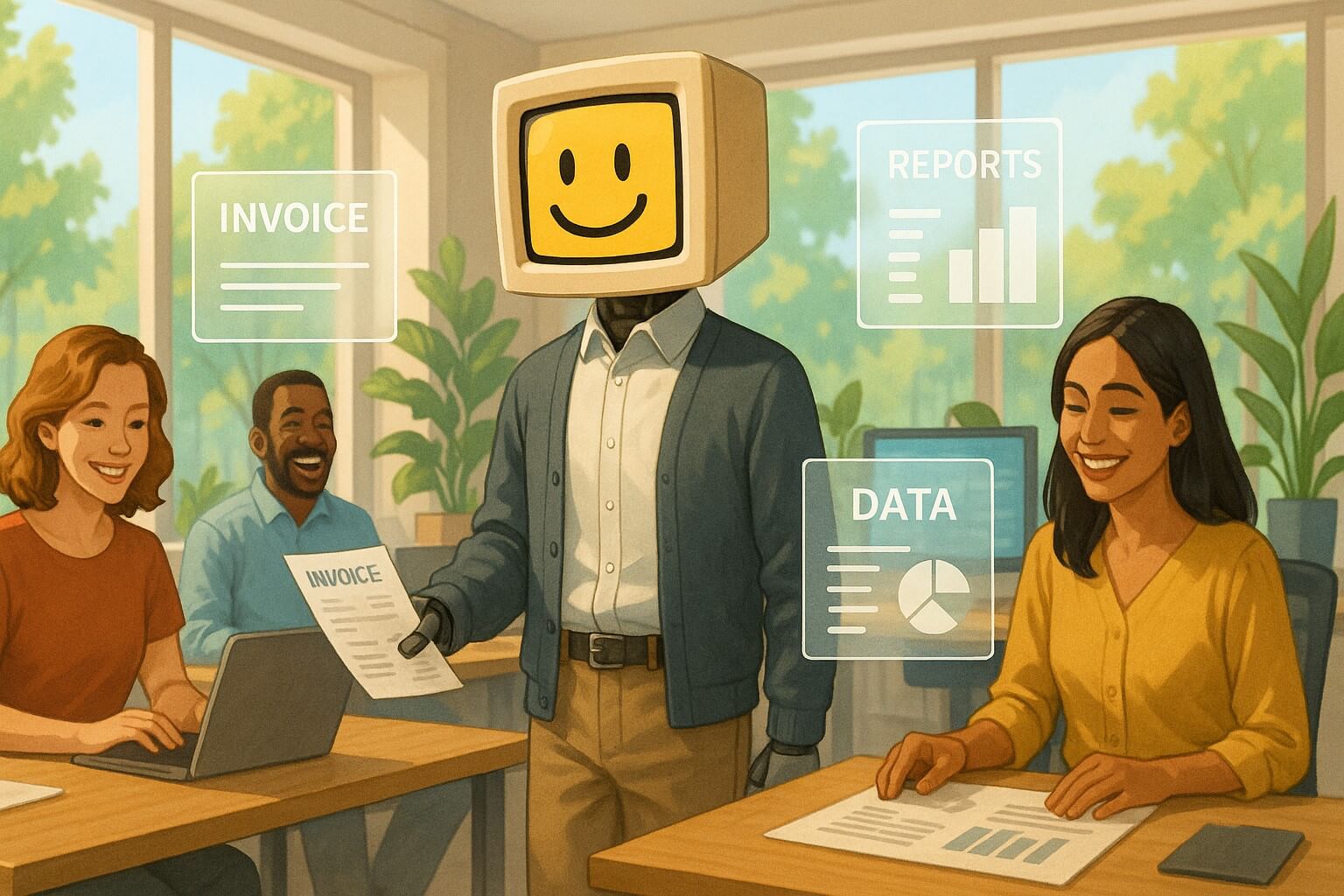Does my business need AI? Should I give it a shot?
A friendly, practical guide to decide if your business needs AI, where it works, five quick questions to ask yourself, and a simple way to get started.

You’re probably hearing all about the amazing benefits (and drawbacks) of AI. Companies are using it to grow faster, serve customers better, and save time and money. But do you actually need AI in your business? Is it a tool you should add to the toolbox, or just a shiny distraction?
This post helps you decide whether AI will help, harm, or simply waste your time.
Do I need AI in my business? The 60-second answer
Yes, try AI if:
- the work you do in your business is stable,
- you are using your existing software to the max and want to achieve more,
- you do repeat computer tasks all the time,
- you’re willing to try something new,
- and someone on your team can put some time aside to work on it.
Then absolutely, give it a shot and try a small AI project!
No, don’t try AI yet if:
- your work absolutely requires human interaction,
- you’re not using your existing software to its full potential,
- the work you do is highly custom and mostly “one-offs”,
- there is a high risk of harm due to making an error,
- you cannot spare anyone’s time to work on an AI project.
It’s probably best for you to avoid starting an AI project right now.
Either way, if you are interested to learn more about how AI and automation could work for your business, start your free AI automation plan, or schedule a call to talk with us at DigitalStaff today!
AI: a valuable trend, or a complete waste of time?
Some people think that AI is a bubble waiting to pop, a technology trend like blockchain, NFTs, and the Segway. There is hype, sure. But the value that AI creates is not going away. AI allows computers to read, write, and THINK just like a person would. But AI is not magic, it can’t offload inventory off that delivery truck, bring you a coffee, or shine your shoes.
The real value of AI is in the creative ways that you can integrate it into your business to solve real problems and enhance your operations. And if you can’t do that, then AI could just be a worthless tool for you.

Where AI shines, and where it doesn’t
AI shines on repetitive, digital work with clear examples to copy. Turning messy notes into clean emails, pulling totals and dates from PDFs, answering common questions on your site, matching payments to invoices, updating your CRM or spreadsheet, writing quick summaries.
AI struggles when the stakes are high with no review, when data is messy or missing, when a task happens once in a while, or when the job needs real empathy and fine judgment. In those cases, keep a person in charge.
Five questions to ask yourself
- Do we repeat the same tasks on the computer steps many times a day/week/month?
- Do our tasks require actual human involvement? Or would it be OK if a computer did them instead?
- Am I receptive to innovating new ways of working, like working alongside an AI team member?
- Could we dedicate at least an hour a week to working on and integrating AI and automation into the business?
- Am I wanting to use AI to create real value for my business, or do I just want to try out the latest, shiniest new thing?
Are you ready to take it on?
Integrating AI into your business isn’t just a ‘one and done’ kind of thing, it’s an ongoing process, it’s all about being creative, trying out new things, testing, improving, and maintaining.
If you’re hoping that AI will magically solve all of your problems in one shot, or if you’re hoping a single AI tool will be able to do it all for you with no thought required, then you will be disappointed.
Brainstorming your first AI automation project
If you’ve decided to go for it, I applaud you! The best thing to do is to start small and brainstorm and make a list of all sorts of tasks and activities your business carries out.
Which tasks take a lot of time? Which tasks are repetitive, but important? What are the steps required to carry out the work? What software programs do we use in these tasks? What bottlenecks or roadblocks do we face in carrying out our work on a regular basis? What work causes the most problems for us?
Once you’ve identified a number of different tasks/processes/activities that could be improved, the best thing to do is to prioritize the list, choose the task that would have the highest value but require the least amount of effort, and get started!
AI is a tool, how you put it to use is what matters
At the end of the day, AI and automation are just tools. Used well, they let you do more work in less time, speed up your processes, open new ways of working, and handle more volume with the same team. Used poorly, they distract and create headaches. When you have a hammer, everything can look like a nail, and AI is one of the most sci-fi hammers out there.
So pause before you rush in. What do you value? What do you want? Where is your business going to be in 2, 5, or 10 years?
If AI helps you get there with less friction and clear wins, use it. If not, skip it and get back to the work that matters.



